International Superstar Soccer 64
International Superstar Soccer 64 (officially abbreviated as ISS 64, originally released in Japan as Jikkyō J.League Perfect Striker[lower-alpha 1] and then later adapted as Jikkyō World Soccer 3[lower-alpha 2]) is a video game developed by Konami Computer Entertainment Osaka in the International Superstar Soccer series by Konami. Its team lineup follows the Super NES version of International Superstar Soccer Deluxe, only with South Africa replacing Morocco.
| International Superstar Soccer 64 | |
|---|---|
 European Nintendo 64 cover art | |
| Developer(s) | Konami Computer Entertainment Osaka |
| Publisher(s) | Konami |
| Composer(s) | Tsutomu Ogura Harumi Ueko |
| Series | International Superstar Soccer |
| Platform(s) | Nintendo 64 |
| Release | |
| Genre(s) | Sports |
| Mode(s) | Single-player, Multiplayer |
International Superstar Soccer 64 was met with critical acclaim, and often called one of the best of the Nintendo 64's third-party releases.
Gameplay
The game is similar to the PlayStation version (including the same player names, with the exception of Japan, England and a handful of American players), but with some teams having a more inaccurate home or away kit. The USA, for example, uses their 1994 World Cup Adidas "stripes" kit as their home kit and their then-current Nike home kit as their away kit. Gameplay is similar to that of the Super NES predecessor, International Superstar Soccer Deluxe, upgraded for the Nintendo 64 with 3D animation. While it keeps largely the same team squads (with the teams now sporting near-authentic kits), South Africa debuted in this game as a selectable side, replacing Morocco. However, the Japanese version has teams that are not present in the Western versions: Bolivia, Yugoslavia, Iran, Australia, Canada and Saudi Arabia.
There are six game modes, including single match, league battle and penalty shoot-out.[2] The player can assign a team member to cover a specific member of the opposing team.[2] The International Cup has the player competing against a range of teams from around the world in a round-robin tournament, while the World League is a series of 70 matches against every one of other teams in the game.
The player can also contest a penalty shoot-out competition with up to 4 players or attempt to complete certain scenarios. These matches are set up with a specific goal—for example, scoring a goal within a given time limit or stopping the opposing team from scoring.
Teams
 Germany
Germany France
France Italy
Italy.svg.png.webp) Switzerland
Switzerland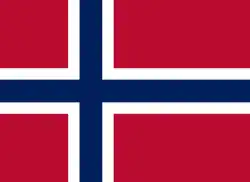 Norway
Norway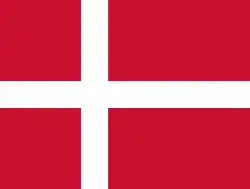 Denmark
Denmark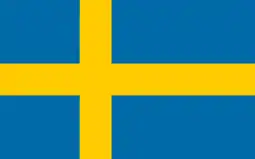 Sweden
Sweden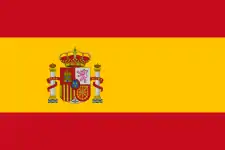 Spain
Spain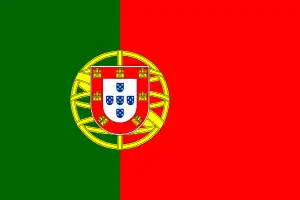 Portugal
Portugal Netherlands
Netherlands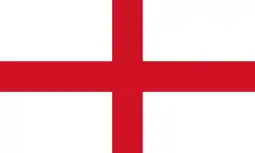 England
England Russia
Russia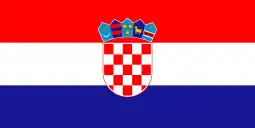 Croatia
Croatia Romania
Romania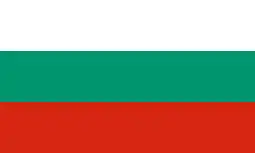 Bulgaria
Bulgaria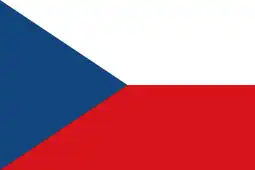 Czech Republic
Czech Republic Japan
Japan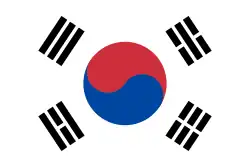 South Korea
South Korea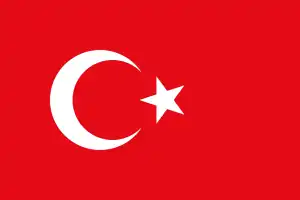 Turkey
Turkey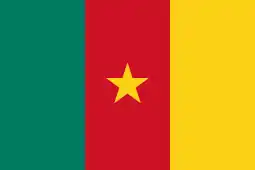 Cameroon
Cameroon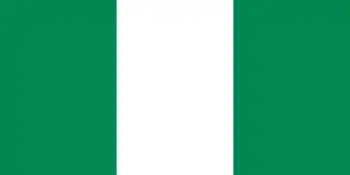 Nigeria
Nigeria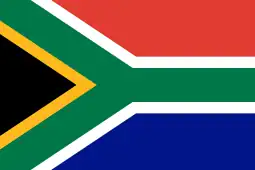 South Africa
South Africa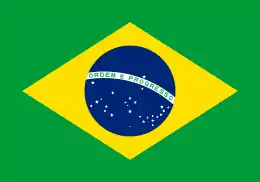 Brazil
Brazil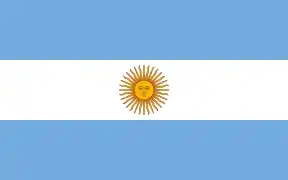 Argentina
Argentina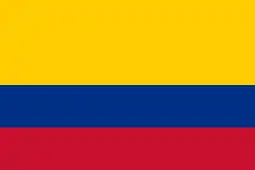 Colombia
Colombia Mexico
Mexico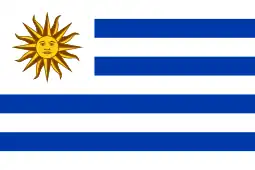 Uruguay
Uruguay United States
United States
USA/European version exclusive
Japanese version exclusive
Reception
| Aggregator | Score |
|---|---|
| GameRankings | 89%[3] |
| Publication | Score |
|---|---|
| CNET Gamecenter | 8/10[4] |
| Edge | 9/10[5] |
| Electronic Gaming Monthly | 9.25/10[6] |
| Famitsu | (P.S.) 32/40[7] (WS3) 31/40[8] |
| Game Informer | 9/10[9] |
| GameFan | 96%[10][lower-alpha 3] |
| GamePro | 17/20[11] |
| GameRevolution | B+[12] |
| GameSpot | 7/10[13] |
| Hyper | 94%[14] |
| IGN | 9/10[15] |
| N64 Magazine | 92%[16][17] (WS3) 91%[18] (P.S.) 89%[19] |
| Next Generation | (US) (JP) |
| Nintendo Power | 3.75/5[22] |
The game was a commercial success, selling over 1 million units in Europe.[23]
The game met with critical acclaim in Japan.[24] In an interview around the time of the game's release in the region, Shigeru Miyamoto said that "Konami's soccer game may be better than [Nintendo's N64] games. It looks really good."[25] Edge said that the Japanese import was "the most versatile and entertaining football game seen on any platform, and forms a strong addition to Nintendo's 64bit [sic] portfolio."[5] GamePro said that Striker "ranks as the best soccer game for the Japanese N64 and quite possibly one of the best soccer titles in Japan. If you own a Japanese N64, Striker's worth a kick-off."[26][lower-alpha 4] Next Generation said that the same Japanese import "goes farther than most titles in presenting a fantastic look and feel. Just make sure you have a few friends around to play it, otherwise you'll tire from 10-3 wins real quick."[21] Famitsu gave it a score of 32 out of 40 for Perfect Striker,[7] and 31 out of 40 for World Soccer 3.[8]
The North American version received favorable reviews, according to the review aggregation website GameRankings. Game Informer gave it universal acclaim, and Nintendo Power gave it a favorable review, over one month before the game was released Stateside.[9][22] Several critics noted that the A.I. in the game was dramatically improved from the Japanese version.[lower-alpha 5] Most said International Superstar Soccer 64 was better than the Nintendo 64's previous soccer game, FIFA Soccer 64,[lower-alpha 6] and Kraig Kujawa of Electronic Gaming Monthly went so far as to call it "without a doubt, the best soccer game on the market".[6] GamePro was one of the few to voice criticisms with the game, specifically the music and the use of fictional players, but called it "an arcade-ish experience that, while not as realistic as FIFA, ranks much higher on the fun scale."[11]
The most often cited strengths of the game included a variety of gameplay modes;[lower-alpha 7] the wide range of moves that the players can execute;[lower-alpha 8] the graceful, lifelike player animations;[lower-alpha 9] and the controls, particularly the tight responsiveness and strong implementation of the Nintendo 64 controller's analog joystick.[lower-alpha 10] However, most critics found it difficult to cover all of the game's positive elements. For example, Next Generation commented, "Details like refs of varying skill, different weather conditions, real stadiums, and attitude give even more depth to a game that gets just about everything right."[20] Peer Schneider of IGN (then known as N64.com) gave strong praise to International Superstar Soccer 64's multiplayer modes.[27] He later published a longer review which covered a few criticisms, such as the lack of a FIFA license, but also commented more extensively on the game's strong attention to detail, and reemphasized that "As far as multiplayer games go, ISS64 has replaced Mario Kart 64, Star Fox 64 and Wayne Gretzky as the ultimate gameplay experience."[15] Glenn Rubenstein of GameSpot said that it "offers just about everything FIFA 64 did. It just does it slightly better."[13]
Just a few months after the game's North American release, Electronic Gaming Monthly ranked it the 24th best console video game of all time, commenting that "The gameplay is awesome, appealing to both hardcore and casual fans of the sport. The graphics are the best of any sports game, as the attention to detail in the player animations is amazing. ... No soccer game comes close to this one."[28] In its 1997 Editors' Choice Awards, Electronic Gaming Monthly also named International Superstar Soccer 64 "Sports Game of the Year" and a runner-up for "Nintendo 64 Game of the Year" (behind GoldenEye 007).[29] Official Nintendo Magazine ranked it the 81st best game available on Nintendo platforms.[30] The game won the award for "Console Sports Game of the Year" at the Academy of Interactive Arts & Sciences' inaugural Interactive Achievement Awards.[31]
Mundial Ronaldinho Soccer 64
The intro of a Peruvian bootleg version of the game intended for the Brazilian market, entitled Mundial Ronaldinho Soccer 64, became a popular Internet meme in 2020.[32] The bootleg, made by Peruvian programmer Lobsang "Mr. Byte" Alvites,[33] changed the announcer's language to Portuguese (although the commentator actually speaks a mix of Peruvian Spanish (see Portuñol) and Japanese).[32] Named after Ronaldo Nazario (who was better known in South America as "Ronaldinho" between the 1994 and 1998 FIFA World Cups, and should not be confused with Ronaldinho, who in Brazil was given the demonym Gaúcho to differentiate from Ronaldo), the title screen uses poorly-edited photos of him.[32] It replaces the names of the fictional players with real-life counterparts (with Ronaldo's name overwriting the Brazil striker named "Allejo", whose appearance was patterned after him), albeit with errors on some, such as Alan Shearer's name being misspelled as "Schearer".[33]
Notes
- Japanese: 実況 Jリーグ パーフェクトストライカー, Hepburn: Jikkyō J Rīgu Pāfekuto Sutoraikā
- Japanese: 実況 ワールドサッカー 3, Hepburn: Jikkyō Wārudo Sakkā 3
- In GameFan's viewpoint of the game, one critic gave it a score of 95, and the other 97.
- GamePro gave the Japanese import three 4/5 scores for graphics, sound, and control, and 4.5/5 for fun factor.
- [15][20][27]
- [13][20][27][11]
- [6][13][27][11]
- [13][15][20][11]
- [6][13][15][20][27][11]
- [6][13][15][20][27][11]
References
- Smith, Erica (August 22, 1997). "On the Shelves This Week". Gamecenter. CNET. Archived from the original on August 17, 2000. Retrieved November 5, 2021.
- "NG Alphas: J-League Perfect Striker". Next Generation. No. 26. Imagine Media. February 1997. p. 104. Retrieved October 31, 2020.
- "International Superstar Soccer 64 for Nintendo 64". GameRankings. CBS Interactive. Archived from the original on May 5, 2019. Retrieved October 31, 2020.
- Lombardi, Doug (September 25, 1997). "International Superstar Soccer 64". Gamecenter. CNET. Archived from the original on August 23, 2000. Retrieved July 19, 2021.
- Edge staff (February 1997). "J-League Perfect Striker [sic]". Edge. No. 42. Future Publishing. pp. 80–81. Retrieved November 1, 2020.
- EGM staff (July 1997). "Team EGM Sports: International Superstar Soccer 64". Electronic Gaming Monthly. No. 96. Ziff Davis. p. 114.
- "実況Jリーグ パーフェクトストライカー [NINTENDO64]". Famitsu (in Japanese). Enterbrain. Retrieved October 31, 2020.
- "実況ワールドサッカー3 [NINTENDO64]". Famitsu (in Japanese). Ziff Davis. Retrieved October 31, 2020.
- McNamara, Andy; Storm, Jon; Anderson, Paul (July 1997). "International Superstar Soccer [64]". Game Informer. No. 51. FuncoLand. Archived from the original on October 21, 1997. Retrieved November 1, 2020.
- Joe Kidd; Jacques Strap (July 1997). "International Superstar Soccer 64 [game misidentified as "International Superstar Soccer Pro for Sony PlayStation"]". GameFan. Vol. 5, no. 7. Metropolis Media. p. 86. Retrieved July 19, 2021.
- Air Hendrix (August 1997). "Konami's SuperStar Soccer Outshines FIFA". GamePro. No. 107. IDG. p. 78. Retrieved October 31, 2020.
- Colin (September 1997). "International Superstar Soccer 64 Review". GameRevolution. CraveOnline. Archived from the original on June 13, 1998. Retrieved November 1, 2020.
- Rubenstein, Glenn (September 4, 1997). "International Superstar Soccer 64 Review". GameSpot. CBS Interactive. Retrieved January 14, 2018.
- Toose, Dan (September 1997). "International Superstar Soccer 64" (PDF). Hyper. No. 47. Next Media Pty Ltd. pp. 46–47. Retrieved July 19, 2021.
- Schneider, Peer (September 3, 1997). "International Superstar Soccer 64". IGN. Ziff Davis. Retrieved January 14, 2018.
- Weaver, Tim (June 1997). "International Superstar Soccer 64 (PAL)". N64 Magazine. No. 3. Future Publishing. pp. 30–36.
- Ashton, James (October 1997). "ISS 64 (US Version)". N64 Magazine. No. 7. Future Publishing. p. 63. Retrieved November 1, 2020.
- Weaver, Tim (November 1997). "Jikkyou World Soccer 3". N64 Magazine. No. 8. Future Publishing. p. 62. Retrieved November 1, 2020.
- Weaver, Tim (April 1997). "J-League Perfect Striker [sic]". N64 Magazine. No. 1. Future Publishing. pp. 78–80.
- "GOOOALLL! (International Superstar Soccer Review)". Next Generation. No. 32. Imagine Media. August 1997. p. 113. Retrieved October 31, 2020.
- "J-League Perfect Striker [sic] (Japan)". Next Generation. No. 30. Imagine Media. June 1997. p. 112. Retrieved October 31, 2020.
- "International Superstar Soccer 64". Nintendo Power. Vol. 98. Nintendo of America. July 1997. p. 97. Retrieved November 1, 2020.
- Schneider, Peer (5 November 1998). "International Superstar Soccer '98 Review". IGN. Retrieved 28 April 2023.
- "Preview: International Superstar Soccer". Electronic Gaming Monthly. No. 104. Ziff Davis. May 1997. p. 112.
- Ogasawara, Ken (March 1997). "Nintendo 64: An Expert's View". GamePro. No. 102. IDG. p. 41.
- Ogasawara, Ken (May 1997). "[Jikkyou J.League] Perfect Striker". GamePro. No. 104. IDG. p. 106. Retrieved November 1, 2020.
- "International Superstar Soccer 64 Review". N64.com. Independent. September 3, 1997. Archived from the original on January 29, 1998. Retrieved February 10, 2016.
- EGM staff (November 1997). "100 Best Games of All Time". Electronic Gaming Monthly. No. 100. Ziff Davis. p. 146. Note: Contrary to the title, the intro to the article (on page 100) explicitly states that the list covers console video games only, meaning PC games and arcade games were not eligible.
- "Editors' Choice Awards". Electronic Gaming Monthly. No. 104. Ziff Davis. March 1998. pp. 87–88.
- East, Tom (February 17, 2009). "Nintendo Feature: 100 Best Nintendo Games: Part One". Official Nintendo Magazine. Future plc. Archived from the original on April 14, 2012. Retrieved December 5, 2013.
- "The Award - Winners". Academy of Interactive Arts & Sciences. Archived from the original on June 15, 1998. Retrieved November 3, 2021.
- Cardozo, Daniel (May 18, 2020). "De onde surgiu o meme Ronaldinho Soccer 64" [Where the Ronaldinho Soccer 64 meme came from]. Rush Arena (in Portuguese). Archived from the original on April 1, 2021.
- Azevedo, Rafael Luis (November 12, 2018). "O cara que produziu os games piratas de 'International Superstar Soccer'" [The face behind the pirated versions of 'International Superstar Soccer']. Vice (in Portuguese). Archived from the original on November 8, 2020.
